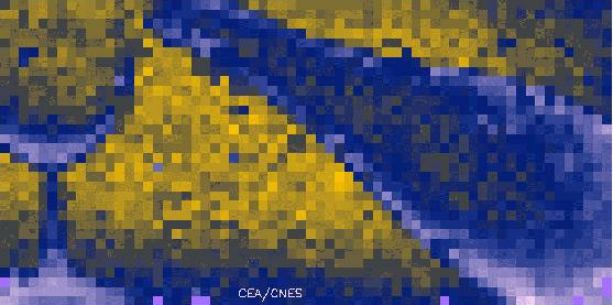Explanation: Gamma-rays are the most energetic form of electromagnetic radiation. But these high energy photons penetrate and interact in normal materials and cannot be focused by lenses and mirrors like those in optical telescopes. So how do you make an image in gamma-ray light? One way is to use a patterned mask of material which can cast gamma-ray shadows on a digital detector array. The mask is called a coded aperture and the resulting shadow patterns can be used to construct a gamma-ray image of the source. For example, consider the picture above. In place of a coded mask, familiar objects were positioned in front of a detector array and illuminated with gamma-rays in a laboratory test. Do you recognize the shadow image? (Click on the picture for the focused visible light image.) Destined to fly on the International Gamma-Ray Astrophysics Laboratory (INTEGRAL) satellite scheduled for launch in October of this year, the detector array is part of the imaging gamma-ray telescope, IBIS.
1999 2000 2001 2002 2003 2004 2005 2006 2007 2008 2009 2010 2011 2012 2013 2014 2015 2016 2017 2018 2019 2020 2021 2022 2023 2024 2025 |
Январь Февраль Март Апрель Май Июнь Июль Август Сентябрь Октябрь Ноябрь Декабрь |
NASA Web Site Statements, Warnings, and Disclaimers
NASA Official: Jay Norris. Specific rights apply.
A service of: LHEA at NASA / GSFC
& Michigan Tech. U.
|
Публикации с ключевыми словами:
gamma ray - telescope - coded aperture - гамма-излучение - кодированная апертура
Публикации со словами: gamma ray - telescope - coded aperture - гамма-излучение - кодированная апертура | |
См. также:
Все публикации на ту же тему >> | |
